Apollo 13 astronaut Fred Haise describes the dramatic events of the Apollo 13 mission
Astronaut Fred Haise recounts the incredible events of the Apollo 13 mission.
On April 11, 1970, NASA astronaut Fred Haise was preparing to follow in the footsteps of Neil Armstrong and Buzz Aldrin and walk on the surface of the Moon.
When Apollo 13 launched into the sunny Florida skies atop a Saturn V rocket that Saturday evening, the mission marked NASA’s third lunar landing attempt. Haise, the mission’s lunar module pilot, was set to become the just the sixth person to walk on the lunar surface, right after Apollo 13 Mission Commander Jim Lovell, who would become the fifth.
But 56 hours later, when Apollo 13 was about 200,000 miles from Earth, an oxygen tank in the spacecraft’s Service Module exploded. The mission’s objective quickly shifted from exploration to survival.
50 YEARS AFTER APOLLO 11, NEIL ARMSTRONG'S SONS DESCRIBE THE DAY THEIR DAD WALKED ON THE MOON
“After the explosion, when I drifted back up into the mothership, the Command Module, I had been in the Lunar Module doing a TV show. Actually, I had just finished it and I looked at the panel and realized that we had lost oxygen tank 2,” he explained. “I was frankly, immediately sick to my stomach with disappointment, I knew we had lost the landing mission.”
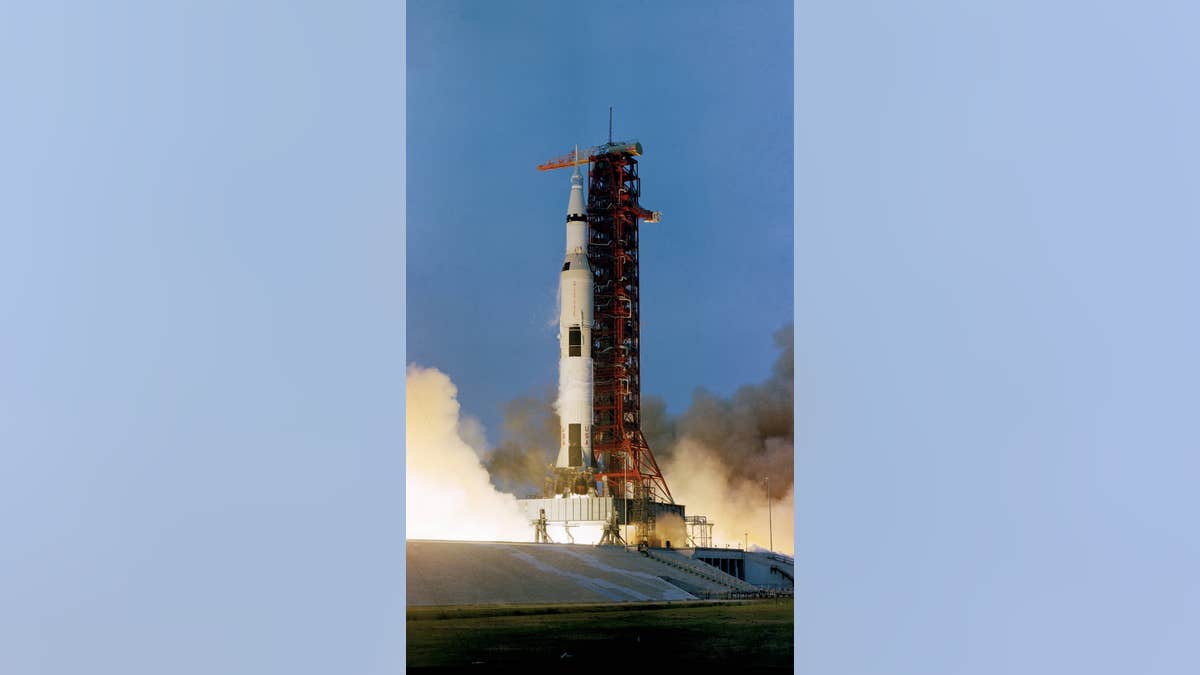
The Apollo 13 launch. (NASA)
“[I] did not think it was life-threatening … we had a second tank, it looked to be intact,” Haise added, who was speaking at a preview event for Christie’s auction “One Giant Leap: Celebrating Space Exploration 50 Years After Apollo 11.”
However, oxygen tank 1 was damaged.
SEVEN INVENTIONS FROM THE APOLLO SPACE PROGRAM WE STILL USE TODAY
“It took some time, actually over probably 20 minutes or more, for the realization became clear that there was a leak, a slow leak, but nevertheless a leak in that tank too,” Haise said. “Only then did we have the thought of it being life-threatening. We got very busy with the people in Mission Control, trying different isolations and switches to try and isolate the leak and that went on for almost up to an hour – at about that time we came to realize that we had run out of ideas, they and ourselves.”
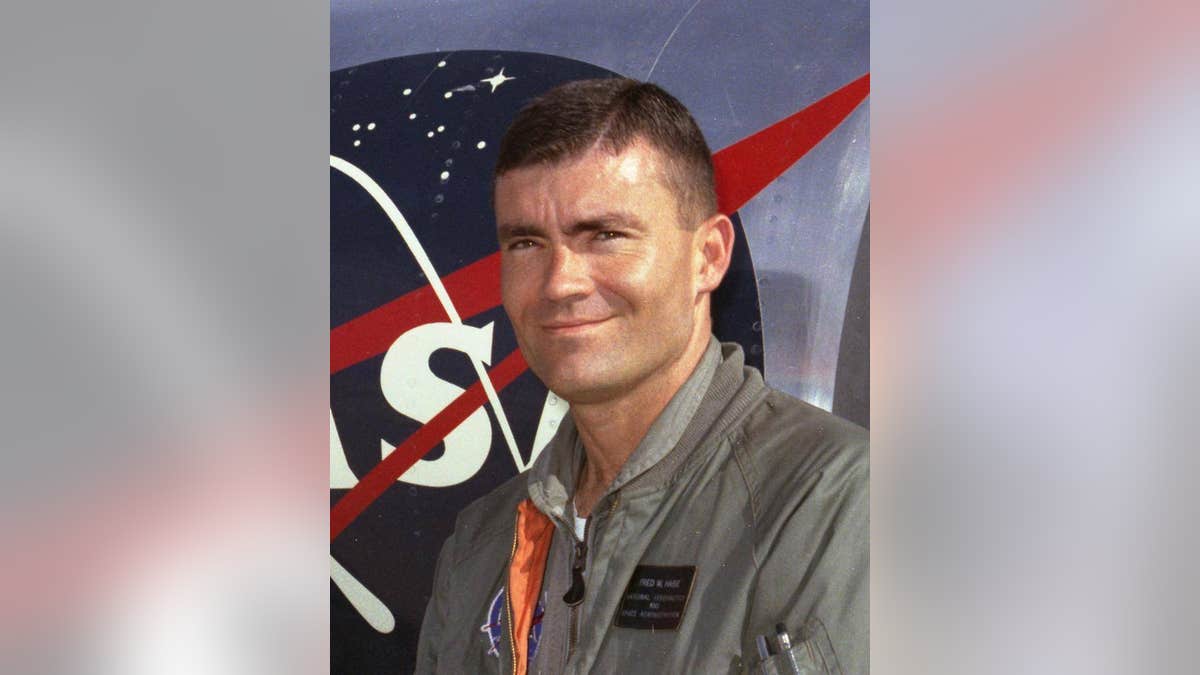
Apollo 13 astronaut Fred Haise. (NASA)
At that point, Haise and Lovell left their fellow astronaut, Jack Swigert, in the Command Module and went to power up the Lunar Module. “We knew that we would need that at least to provide communication, environmental systems and propulsion, probably to try and get us back home,” he said. “It bought time for people to work on the situation we had in hand and develop an alternate plan.”
Working with Mission Control, the astronauts overcame numerous challenges. With carbon dioxide in the Lunar Module reaching a dangerous level, the crew had to adapt lithium hydroxide canisters designed for the Command Module to work in the Lunar Module. A swarm of debris from the explosion also made navigation difficult. The dramatic events are depicted in the hit Hollywood movie "Apollo 13," where Haise is portrayed by the late actor, Bill Paxton.
GOLF ON THE MOON: HOW ALAN SHEPARD TRICKED NASA AND HIT THE MOST FAMOUS SHOT IN HISTORY
Suffering from a lack of sleep, food and water within the cold spacecraft, Haise, Lovell and Swigert experienced extreme physical discomfort as they guided Apollo 13 back to Earth.
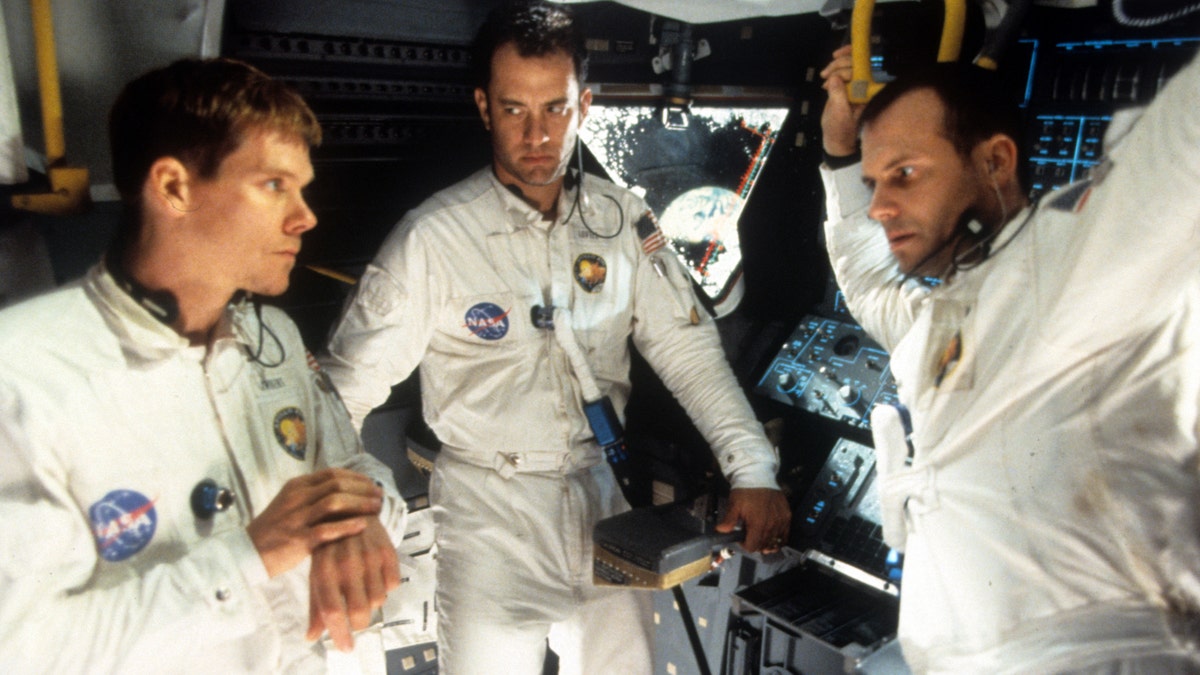
Kevin Bacon, Tom Hanks, and Bill Paxton, who portrayed Fred Haise, talking in ship in a scene from the film 'Apollo 13', 1995. (Photo by Universal/Getty Images)
Nonetheless, Haise told Fox News that he was always confident that the mission would make it home. “There was never a point where we had not got to where we needed - to have something else figured out already, and it wasn’t ready,” he explained. “We never got to the edge of the cliff.”
As the world watched with bated breath, Apollo 13 re-entered Earth’s atmosphere on April 17 and splashed down in the South Pacific. “When you realize you finally, have probably got it made, is when you look out the window and see the big main chutes,” he said. “Obviously, we were very happy to get back to that point. It had been very miserable through the last three-and-a-half days anyway, it got very cold and damp in the spacecraft.”
BUZZ ALDRIN, OTHERS TELL APOLLO'S INSIDE STORY IN RARE, NEWLY RELEASED INTERVIEWS
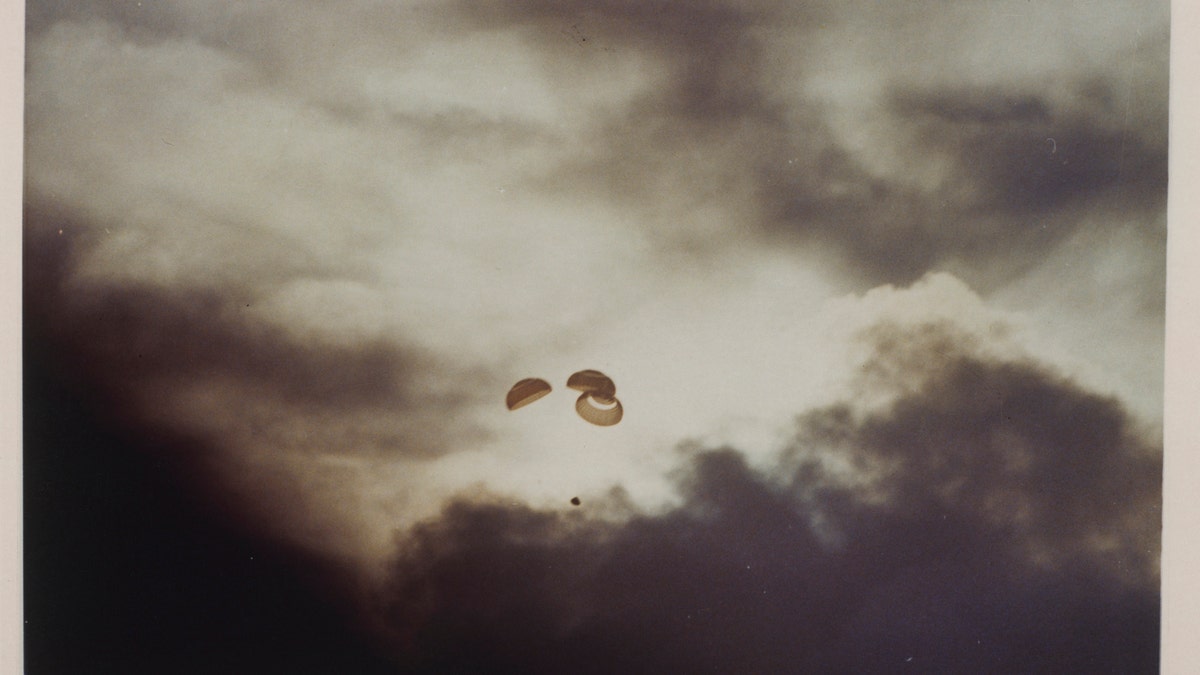
The Apollo 13 spacecraft parachutes to Earth, just before splashdown in the South Pacific Ocean after its aborted lunar landing mission, 17th April 1970. (Photo by Space Frontiers/Getty Images)
Haise had become ill during the mission so he had to miss the celebration onboard recovery ship U.S.S. Iwo Jima.
APOLLO 11'S MICHAEL COLLINS REFLECTS ON HISTORIC MOON LANDING: 'WE WERE JUST REGULAR ASTRONAUTS'
The astronaut, who had been backup lunar module pilot for Apollo 11, remained in the Apollo program, although funding problems sadly thwarted his ambition to return to the Moon. He went on to serve as the technical assistant to the Manager of the Space Shuttle Orbiter Program and, in 1977, flew approach and landing tests for space shuttle prototype Enterprise.
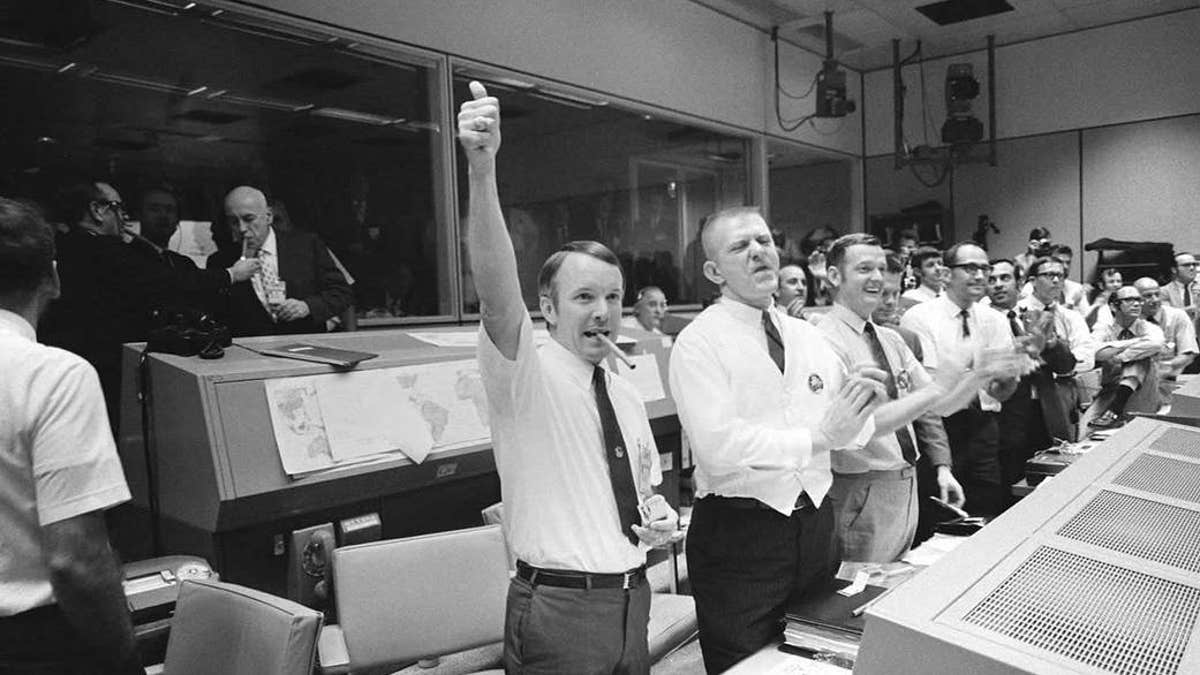
Mission Control celebrates the Apollo 13 splashdown. (NASA)
He left NASA in 1979 to join Grumman Aerospace Corporation.
CLICK HERE TO GET THE FOX NEWS APP
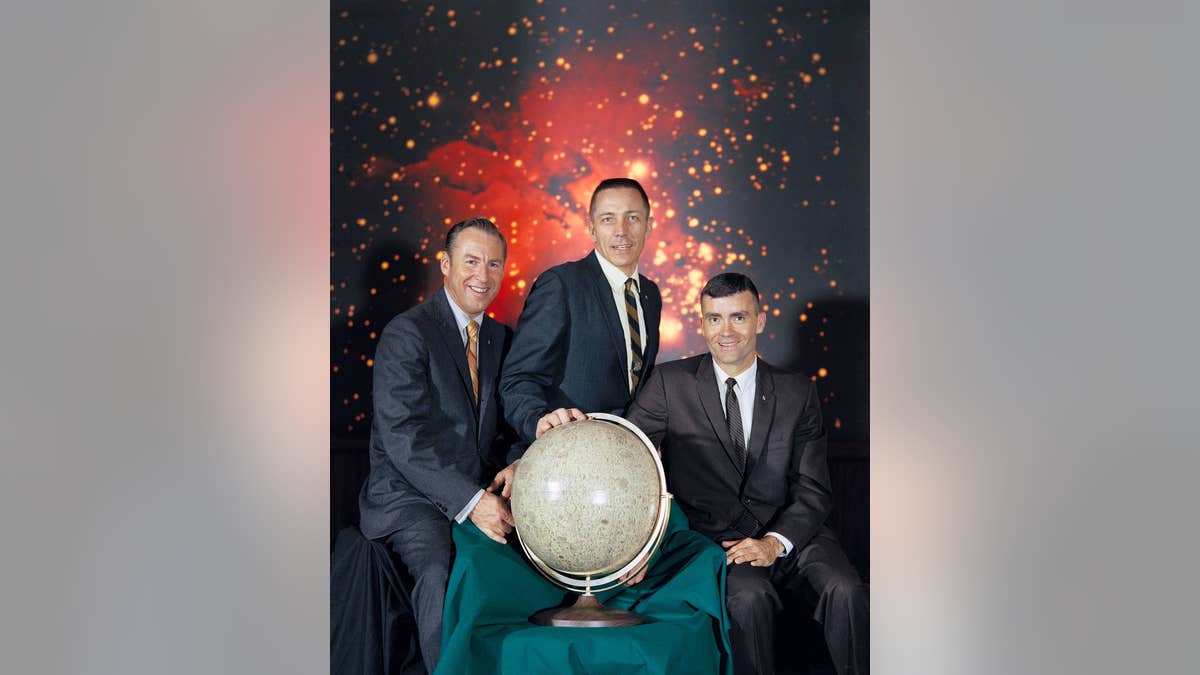
The Apollo 13 crew portrait - from left to right are Mission Commander Jim Lovell, Command Module pilot Jack Swigert and Lunar Module Pilot Fred Haise (NASA)
While he never got to set foot on the lunar surface, Haise did get to see Earth’s natural satellite up close when Apollo 13 passed by the far side of the Moon.
“For me, it was kind of sad, as we went by, I could look at [the] Fra Mauro [region on the Moon], where we hoped we would have landed on Apollo 13,” he told Fox News. “But, otherwise, the view was spectacular.”
Follow James Rogers on Twitter @jamesjrogers

